
EUROPEAN JOURNAL OF OPHTHALMOLOGY
Scope & Guideline
Shaping the Future of Eye Care and Research
Introduction
Aims and Scopes
- Clinical Ophthalmology:
Focus on clinical research, including studies on surgical techniques, treatment outcomes, and management strategies for various ocular conditions. - Diabetic Eye Disease:
A significant emphasis on diabetic retinopathy and diabetic macular edema, including their pathogenesis, screening methods, and treatment efficacy. - Innovative Surgical Techniques:
Research on novel surgical approaches and devices, including minimally invasive techniques and advancements in intraocular lens technology. - Ocular Imaging:
Utilization of advanced imaging technologies such as optical coherence tomography (OCT) and angiography to diagnose and monitor ocular diseases. - Artificial Intelligence in Ophthalmology:
Integration of AI and machine learning in diagnosing and managing ocular diseases, emphasizing the role of technology in enhancing clinical decision-making. - Public Health and Epidemiology:
Studies addressing the epidemiology of eye diseases, including risk factors, prevalence, and the socioeconomic impacts of visual impairment.
Trending and Emerging
- Teleophthalmology and Remote Care:
The rise of telemedicine, particularly in response to the COVID-19 pandemic, has led to increased research on remote diagnosis and management of ocular conditions. - Diabetic Eye Disease Innovations:
A growing focus on new therapies and technologies for managing diabetic retinopathy and diabetic macular edema, including the use of intravitreal injections and novel imaging techniques. - AI and Machine Learning Applications:
Significant interest in the application of artificial intelligence for early detection, diagnosis, and management of eye diseases, indicating a technological shift in ophthalmology. - Ocular Surface Disease and Dry Eye Management:
An increase in research dedicated to understanding and managing ocular surface diseases, particularly dry eye syndrome, reflecting a growing awareness of its prevalence and impact. - Genetic and Molecular Research:
Emerging studies on the genetic basis of ocular diseases and the role of molecular markers in disease progression and treatment response. - Choroidal and Retinal Imaging Advances:
A trend towards utilizing advanced imaging modalities such as OCT angiography to assess choroidal and retinal diseases, enhancing diagnostic capabilities.
Declining or Waning
- Traditional Surgical Techniques:
There is a noticeable decrease in publications focusing on conventional surgical techniques, as the field shifts toward more innovative and minimally invasive approaches. - Basic Science Research:
The journal has seen fewer articles dedicated to basic science aspects of ophthalmology, such as histopathological studies, in favor of clinical and translational research. - Historical Perspectives:
The publication of articles that explore historical aspects of ophthalmology has diminished, indicating a move towards contemporary research and current clinical challenges. - Pharmacological Treatments for Common Eye Conditions:
Research on established pharmacological treatments for common conditions like glaucoma has waned, possibly due to a shift towards exploring newer treatment modalities and combination therapies.
Similar Journals
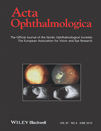
ACTA OPHTHALMOLOGICA
Exploring New Horizons in OphthalmologyACTA OPHTHALMOLOGICA, published by Wiley, is a premier academic journal dedicated to advancing the field of ophthalmology and related medical disciplines. Established in 1923 and maintaining esteemed status through converged years until 1994, and then from 2008 to the present, this journal has consistently delivered pioneering research, reviews, and clinical advancements essential for both practitioners and researchers in eye care. With an impressive impact factor and ranking within the top 15 of its category, ACTA OPHTHALMOLOGICA stands as a Q1 journal in both Medicine (Miscellaneous) and Ophthalmology, reflecting its significant contribution to the field. Although it is not an open-access journal, it continues to offer valuable insights and empirical findings that inform clinical practices and innovative research approaches. As such, it remains a vital resource for scholars, clinicians, and students keen to stay at the forefront of ophthalmological science.
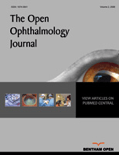
Open Ophthalmology Journal
Innovating vision science for a brighter tomorrow.The Open Ophthalmology Journal, published by Bentham Science Publishers Ltd, is a vital resource in the field of ophthalmology, dedicated to advancing knowledge through open-access research. With an ISSN of 1874-3641, it offers a platform for the dissemination of innovative studies from 2011 to 2024, focusing on the latest developments in eye care and vision science. Despite being categorized in the lower quartile (Q4) according to the 2023 rankings, and holding a position in the Scopus Ricks at 113 out of 137 in the ophthalmology domain, the journal serves as a valuable outlet for emerging scholars and seasoned researchers alike to share their findings. The journal's commitment to accessibility ensures that its content is available to a broad audience, promoting collaboration and knowledge exchange. Located in the Netherlands, The Open Ophthalmology Journal aspires to become a cornerstone for those passionate about understanding and improving ocular health through rigorous scientific inquiry.

Journal of Ophthalmic & Vision Research
Pioneering Insights in Vision ResearchThe Journal of Ophthalmic & Vision Research, published by KNOWLEDGE E, stands as a crucial platform for disseminating high-quality research in the field of ophthalmology. With an ISSN of 2008-2010 and an E-ISSN of 2008-322X, this journal fosters open access to valuable insights since 2010, enhancing visibility and reach for researchers globally. Based in Dubai, UAE, it has established a reputation for excellence, reflected in its Q2 ranking in Ophthalmology for 2023 and its position among the top 65th percentile in Scopus. Covering a broad spectrum of topics within ophthalmic science, the journal serves as a vital resource for professionals, researchers, and students by presenting original research, reviews, and case studies that drive innovation and collaboration within the community. As the journal continues to contribute to advancements in eye care and vision sciences, it invites scholars to explore, engage, and publish within its pages, thus enriching the global discourse on ophthalmic health.
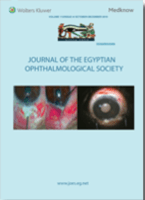
Journal of the Egyptian Ophthalmological Society
Empowering eye care with cutting-edge discoveries.Journal of the Egyptian Ophthalmological Society is a premier academic journal dedicated to advancing the field of ophthalmology through high-quality peer-reviewed research. Published by Wolters Kluwer Medknow Publications, this journal plays a critical role in disseminating vital findings and innovations in eye care, fostering knowledge exchange among researchers, practitioners, and educators worldwide. Since its transformation to Open Access in 2014, it has significantly enhanced the accessibility of eye health information, thereby broadening its impact on the global scientific community. With an ISSN of 2090-0686 and an E-ISSN of 2314-6648, the journal aims to tackle contemporary issues in ophthalmology, including clinical practices, public health, and technological advancements in eye care. The journal's commitment to excellence ensures that it remains a vital resource for those looking to contribute meaningfully to this dynamic and crucial field.
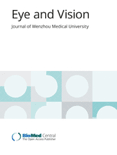
Eye and Vision
Exploring the depths of ocular research and clinical excellence.Eye and Vision, published by BMC, is a leading open-access journal dedicated to the dynamic field of ophthalmology and visual sciences. With its ISSN 2326-0246 and E-ISSN 2326-0254, the journal has established itself as a premier platform for innovative research and clinical studies, achieving impressive rankings in 2023 as Q1 in both Health Professions (Miscellaneous) and Ophthalmology categories. The journal's commitment to accessible knowledge since its transition to open access in 2015 enhances its global reach, allowing researchers, clinicians, and students to share and access top-tier studies and advancements in the field. Located in the United Kingdom and delivering influential insights from 2014 through to 2024, Eye and Vision holds significant relevance, with a Scopus ranking placing it in the 99th percentile for Health Professions and the 93rd percentile for Ophthalmology, making it an essential resource for those looking to stay at the forefront of eye research and vision science.
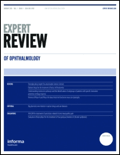
Expert Review of Ophthalmology
Delivering Critical Perspectives on Vision ScienceExpert Review of Ophthalmology is a leading academic journal published by ROUTLEDGE JOURNALS, TAYLOR & FRANCIS LTD, specializing in the rapidly evolving field of ophthalmology. With its ISSN 1746-9899 and E-ISSN 1746-9902, this journal has been at the forefront of disseminating critical research and insightful reviews since its inception in 2006. Covering a broad spectrum of topics within ophthalmology, it plays a pivotal role in advancing knowledge and practice, especially given its prestigious standings in various quartile rankings, including Q1 in Public Health and Q2 in Immunology and Allergy for 2023. The journal aims to provide professionals, researchers, and students with comprehensive perspectives on contemporary challenges and innovations in ophthalmology. Generously supported by a robust peer-review process, the journal ensures that all published works meet high academic standards, thereby serving as a vital resource for anyone looking to stay informed about the latest developments in eye care and vision science. By bridging research and clinical application, Expert Review of Ophthalmology is essential for those aiming to contribute meaningfully to this critical field.

GRAEFES ARCHIVE FOR CLINICAL AND EXPERIMENTAL OPHTHALMOLOGY
Exploring Innovations in Ocular HealthGRAEFES ARCHIVE FOR CLINICAL AND EXPERIMENTAL OPHTHALMOLOGY, published by Springer, has established itself as a premier journal in the field of ophthalmology since its inception in 1870. With an ISSN of 0721-832X and an E-ISSN of 1435-702X, this esteemed journal enjoys a notable impact in the research community, ranking Q1 in Ophthalmology and Q1 in Sensory Systems, as per the latest 2023 journal category quartiles. GRAEFES Archive is dedicated to advancing our understanding of ocular health through both clinical and experimental studies, making it an essential resource for researchers, practitioners, and students alike. Its comprehensive scope covers various aspects of ophthalmic science, reflecting its long-standing commitment to quality and excellence. Although it currently operates on a subscription basis, the journal's significant Scopus rankings—24th out of 137 in Ophthalmology—underscore its relevance and influence within the scientific community. Situated in Germany, with its address in the United States, this international journal continues to shape the discourse on vision science and therapeutic innovation.

Asia-Pacific Journal of Ophthalmology
Bridging research and practice in eye care.Asia-Pacific Journal of Ophthalmology is a distinguished open access journal published by the Asia-Pacific Academy of Ophthalmology (APAO), specializing in the latest advancements and research in ophthalmology. Since its inception in 2013, this journal has established itself as a vital platform for disseminating innovative findings and clinical practices across the Asia-Pacific region and beyond. With an impressive Scopus ranking of #10 out of 137 in the field of Medicine (Ophthalmology), placing it in the 93rd percentile, it garners significant attention and respect within the academic community. Currently holding a Q1 categorization in both Medicine (miscellaneous) and Ophthalmology, the journal embraces a broad scope that encompasses clinical studies, experimental research, and reviews aimed at enhancing the understanding and management of eye health. Its open access model since 2019 ensures that all published works are freely accessible, promoting greater collaboration and knowledge sharing among researchers, clinicians, and students. Situated in the Netherlands with a prominent address in Hong Kong, the journal serves as an essential resource for anyone dedicated to the field of ophthalmology.

Journal of Ophthalmology
Illuminating Innovations in OphthalmologyThe Journal of Ophthalmology, published by HINDAWI LTD, is an esteemed open-access journal that has been disseminating significant research in the field of ophthalmology since 2009. With an ISSN of 2090-004X and an E-ISSN of 2090-0058, this journal facilitates global access to cutting-edge studies, making it an essential resource for researchers, clinicians, and students alike. Ranked in the Q2 category of ophthalmology for 2023, the journal holds a commendable position with a Scopus rank of #37 out of 137 in its field, placing it in the 73rd percentile. The journal encompasses a variety of topics such as clinical advancements, surgical techniques, and innovative technologies in eye care, aiming to advance scientific knowledge and clinical practice in ophthalmology. By providing a platform for both novel research and comprehensive reviews, the Journal of Ophthalmology is instrumental in fostering collaboration and scholarly communication within the global eye health community, and its commitment to open access ensures that impactful research reaches a wide audience without barriers.

Ophthalmology and Therapy
Elevating Ophthalmic Knowledge for Global ImpactOphthalmology and Therapy is a premier open-access journal published by Springer International Publishing AG, dedicated to advancing the field of ophthalmology through innovative research and clinical studies. With an ISSN of 2193-8245 and an E-ISSN of 2193-6528, this journal serves as a vital resource for researchers, healthcare professionals, and students interested in the latest developments in eye care and vision science. The journal has achieved a remarkable impact factor and has been recognized as a Q1 journal in Ophthalmology, reflecting its contributions to the discipline and its high-quality publications. Operating from the United Kingdom, Ophthalmology and Therapy is an open-access platform that has been available since 2012, ensuring that critical research is accessible to a global audience. Its commitment to fostering collaboration and knowledge sharing is exemplified by its ranking of #39 out of 137 in the Scopus category for Medicine – Ophthalmology, placing it in the 71st percentile of its peers. Together, these attributes highlight the journal's importance as a key forum for the dissemination of cutting-edge research, making it an essential addition to the libraries of institutions and professionals engaged in ophthalmic care.